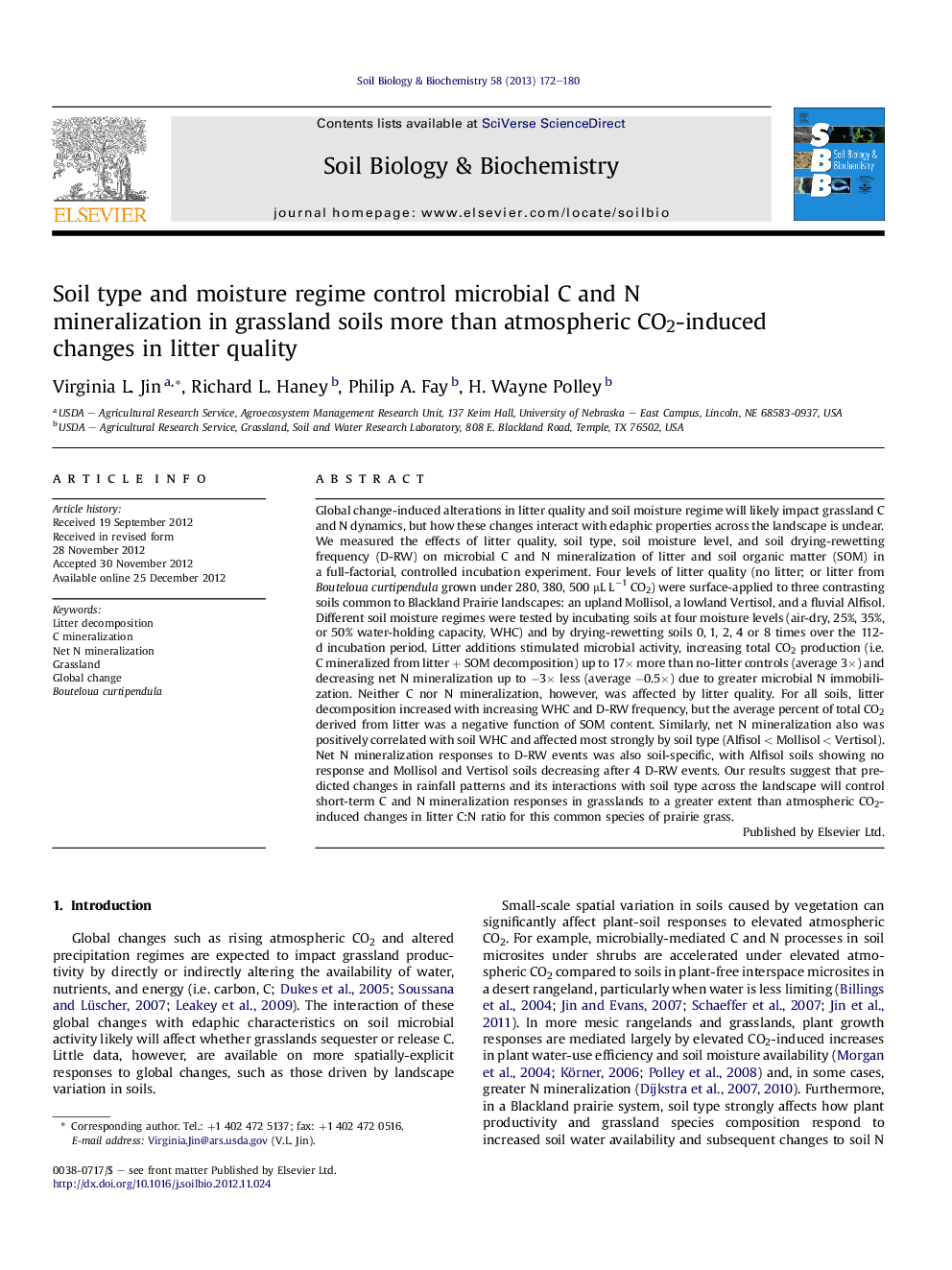| کد مقاله | کد نشریه | سال انتشار | مقاله انگلیسی | نسخه تمام متن |
|---|---|---|---|---|
| 2024884 | 1542626 | 2013 | 9 صفحه PDF | دانلود رایگان |

Global change-induced alterations in litter quality and soil moisture regime will likely impact grassland C and N dynamics, but how these changes interact with edaphic properties across the landscape is unclear. We measured the effects of litter quality, soil type, soil moisture level, and soil drying-rewetting frequency (D-RW) on microbial C and N mineralization of litter and soil organic matter (SOM) in a full-factorial, controlled incubation experiment. Four levels of litter quality (no litter; or litter from Bouteloua curtipendula grown under 280, 380, 500 μL L−1 CO2) were surface-applied to three contrasting soils common to Blackland Prairie landscapes: an upland Mollisol, a lowland Vertisol, and a fluvial Alfisol. Different soil moisture regimes were tested by incubating soils at four moisture levels (air-dry, 25%, 35%, or 50% water-holding capacity, WHC) and by drying-rewetting soils 0, 1, 2, 4 or 8 times over the 112-d incubation period. Litter additions stimulated microbial activity, increasing total CO2 production (i.e. C mineralized from litter + SOM decomposition) up to 17× more than no-litter controls (average 3×) and decreasing net N mineralization up to −3× less (average −0.5×) due to greater microbial N immobilization. Neither C nor N mineralization, however, was affected by litter quality. For all soils, litter decomposition increased with increasing WHC and D-RW frequency, but the average percent of total CO2 derived from litter was a negative function of SOM content. Similarly, net N mineralization also was positively correlated with soil WHC and affected most strongly by soil type (Alfisol < Mollisol < Vertisol). Net N mineralization responses to D-RW events was also soil-specific, with Alfisol soils showing no response and Mollisol and Vertisol soils decreasing after 4 D-RW events. Our results suggest that predicted changes in rainfall patterns and its interactions with soil type across the landscape will control short-term C and N mineralization responses in grasslands to a greater extent than atmospheric CO2-induced changes in litter C:N ratio for this common species of prairie grass.
► Litter addition increased soil CO2 production and decreased net N mineralization.
► Soil C and N mineralization did not differ among litter grown at three CO2 levels.
► Main C sources mineralized were litter in Alfisols and SOM in Mollisols/Vertisols.
► Soil moisture-driven increases in C and N mineralized were lowest in Alfisols.
► Soil type and moisture affect grassland soil C and N cycling more than litter C:N.
Journal: Soil Biology and Biochemistry - Volume 58, March 2013, Pages 172–180